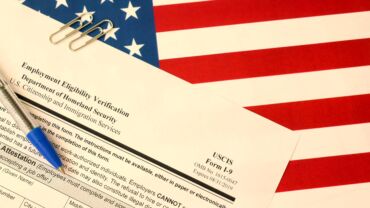Year-end processing poses a number of challenges to payroll administrators, accountants, business owners, and employers of all types. Checkpoint Payroll has put together this series of articles aimed at guiding you through the trials of the year-end processing season.
It’s a great perk when an employer provides a company car that a worker can also use during non-work hours. But the value of that perk is generally taxable. But how do you tax the value of a noncash fringe benefit?
How do you calculate PUCC? There are four methods to calculate personal use of a company car (PUCC):
- General valuation method. Under this method, the value is the fair market value of the employer-provided vehicle, determined as the amount the employee would pay to a third party to lease the same vehicle in the geographic area where the employee uses the vehicle.
- The Annual Lease Value Method. Employers may use the Annual Lease Value (ALV) Method if the vehicle is provided to the employee for the entire calendar year. The ALV is determined according to a table as provided in IRS regulations (see Payroll Guide ¶3580 ). That value is then multiplied by the employee’s personal-use percentage for the vehicle (personal miles divided by total miles driven). The ALV remains the same for four years unless the vehicle is transferred to another employee. Employers with a fleet of 20 or more vehicles may use the fleet-average valuation rule to determine the ALV of the vehicles in the fleet. However, the fleet-average valuation rule cannot be used if the FMV of the vehicle when it is first made available for employee use in 2023 exceeds $60,800. If the employer provides fuel in addition to the car, the value of the fuel must also be reported in addition to the value of the vehicle for federal income tax purposes. The value of fuel may be calculated based on the fair market value (FMV) of the fuel (based on receipts) or a flat rate of 5.5¢ per mile for all miles driven.
Example: Matrix Enterprises provides Trinity the use of a vehicle with an FMV of $32,500. Trinity drove 300 miles for business use and 55 miles in the month for personal use.
- Step 1: Determine the ALV of the vehicle with an FMV of $32,500 (see Payroll Guide ¶3580 for the ALV table). For an FMV of $32,000-$33,999, the ALV is $8,750.
- Step 2: Determine the monthly ALV. $8,750 ÷ 12 = $729.17
- Step 3: Determine total miles driven. 300 business miles + 55 personal miles = 355 total miles.
- Step 4: Determine the percentage of personal use. 55 personal ÷ 355 total miles = 15.5%
- Step 5: Determine the value of personal use. $729.17 monthly lease value x 15.5% personal use = $113.02
- Step 6: If the employer pays for the fuel used for personal use, calculate the value of the fuel. 55 personal miles x 5.5¢ = $3.03
- Step 7: Determine the value of personal use and employer-provided fuel. $113.02 + $3.03 = $116.05
- The Cents-per-Mile Method. In this method, the number of miles driven for personal use is multiplied by the standard mileage rate to determine the taxable value of the benefit. For 2023, the business mileage rate is 65.5¢. This method may only be applied if the vehicle (including truck or van) is: (1) regularly used in the employer’s business throughout the calendar year, (2) driven more than 10,000 miles during the year, and (3) does not have a fair market value exceeding $60,800 in 2023.
Example: Maggie drives 25,000 personal miles in 2023.
- Total value of PUCC for 2023: 25,000 x 65.5¢ = $16,375
- Let’s assume that Maggie pays for all the gas for her personal miles, we would then need to deduct 5.5¢ per mile. So for 2023, the employer would report 60¢ for each mile driven, for a total of $15,000.The Commuting-Valuation method. If an employee is required for bona fide non-compensatory business reasons – i.e., unsafe conditions – to travel between home and work (commute) in a company vehicle that is not otherwise available for personal use, a flat $1.50 one-way rate ($3.00 round trip) may be used to value the commute. The employer must have a written policy that states that the only personal use of the vehicle is for commuting purposes. The employee must be a nonexempt employee for Fair Labor Standards Act (FLSA) purposes and other restrictions may apply (see Payroll Guide ¶3580 ).
What is the withholding requirement for PUCC?
Because PUCC is taxable, withholding occurs after the fact (imputed income). Imputed income most often results after the receipt of a noncash fringe benefit. For example, the value of the personal use of a company car (PUCC) is taxable as wages even though the employee didn’t receive cash. The value of the benefit is taxed and must be reported (see Payroll Guide ¶4105 ).
How to record PUCC and where to report:
In order to calculate, withhold, and report the taxes for PUCC, you’ll need to add the amount to a regular paycheck to avoid a negative net paycheck. If there is not enough regular pay to cover the taxes owed, FICA taxes for both the employee and employer must still be paid by the employer, and you will end up covering the employee’s share. Depending on what valuation method you use, the amount of regular pay needed to cover the taxes may be quite high. It is recommended to report PUCC payments on a more regular (i.e. monthly) basis to avoid this scenario.
To report the PUCC on a regular paycheck:
- Calculate the taxable value of the PUCC using one of the above methods.
- Note the FICA and federal and state withholding taxes on the regularly calculated paycheck. This is important because while federal income tax withholding is optional, FICA withholding is required. You may wish to lower the amount of income tax withholding for federal and state in order to avoid a negative net paycheck.
- Add the PUCC as a separate line item on the paycheck for reporting purposes. Allow FICA to calculate, but keep an eye on the net pay and adjust accordingly to achieve either a positive or net-zero paycheck.
To report the PUCC on Form W-2:
The PUCC amounts should be reported in W-2 boxes 1, 3, 5, and 16/18 if applicable. The amount should also be reported in box 14 with the recommended label “Auto Fringe” or something similar.










